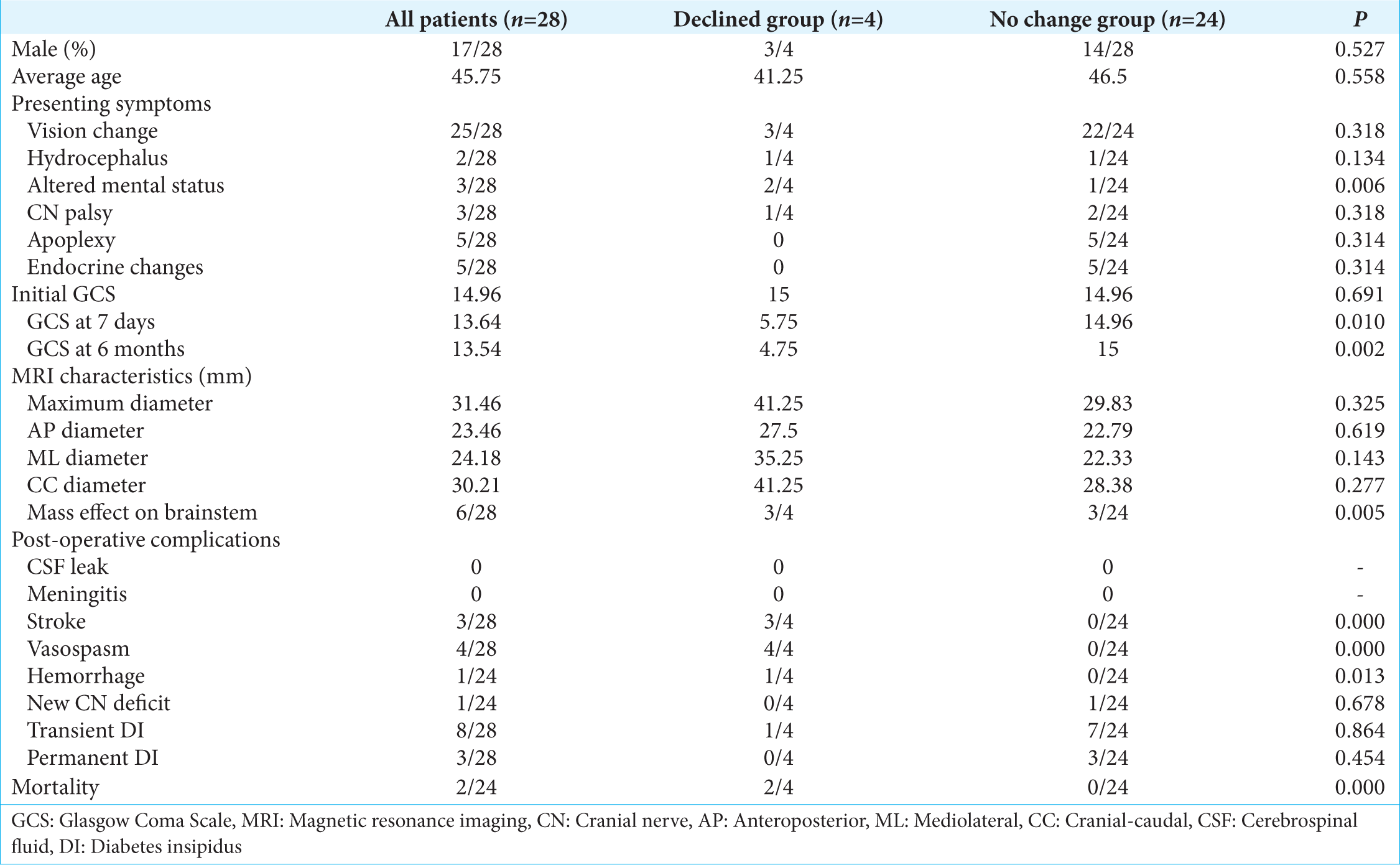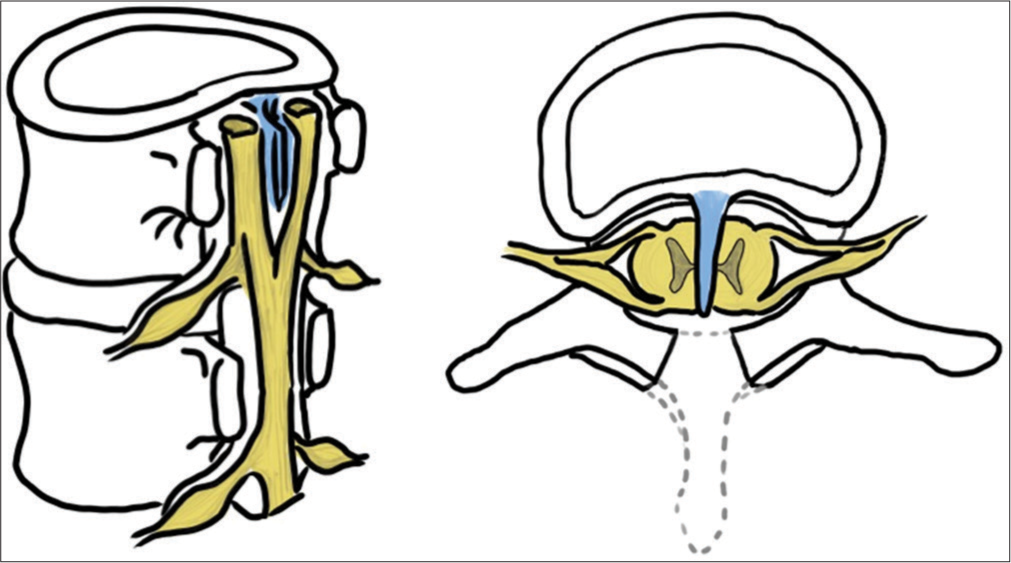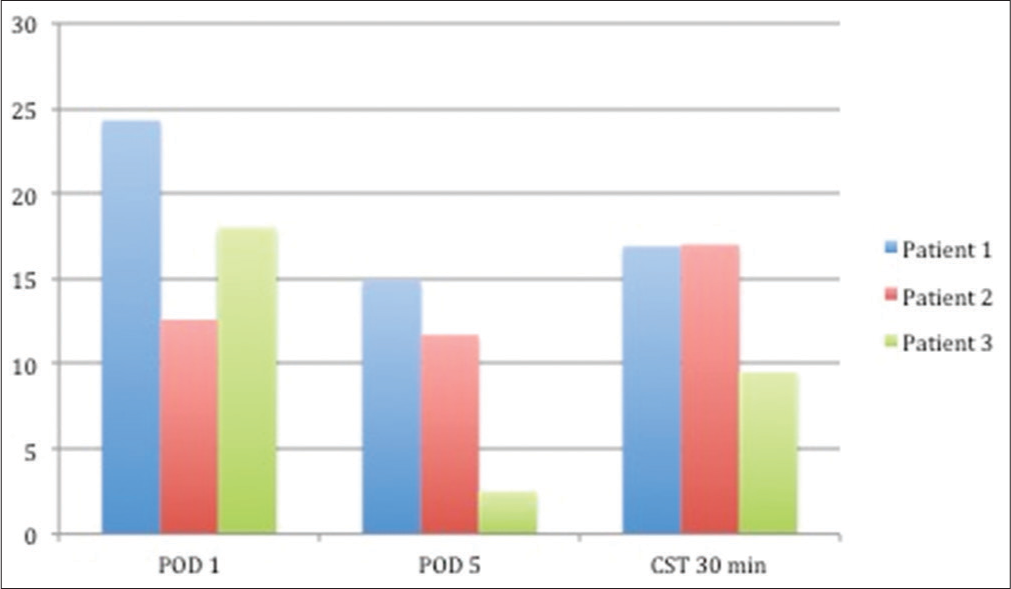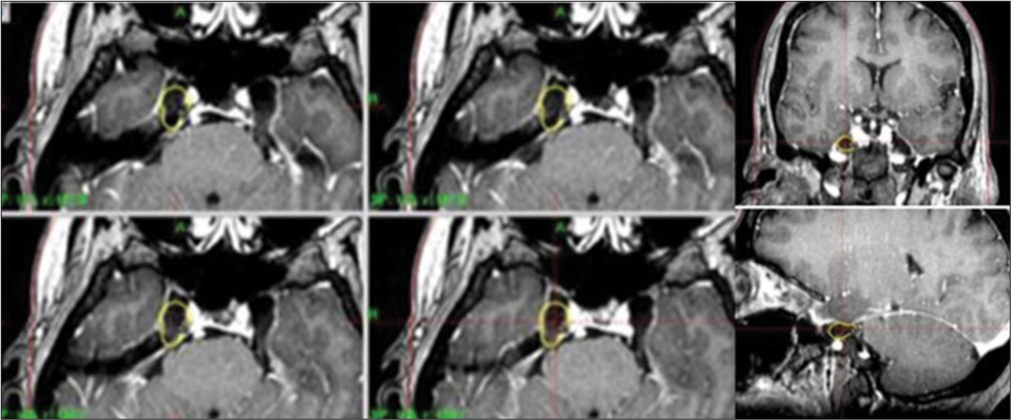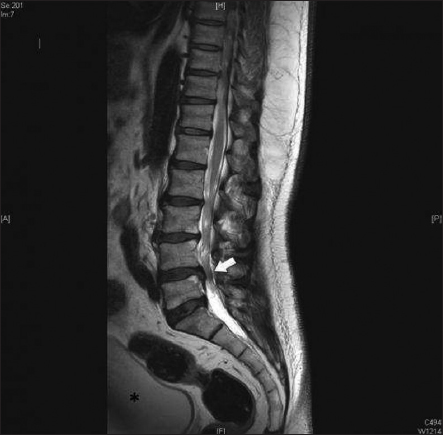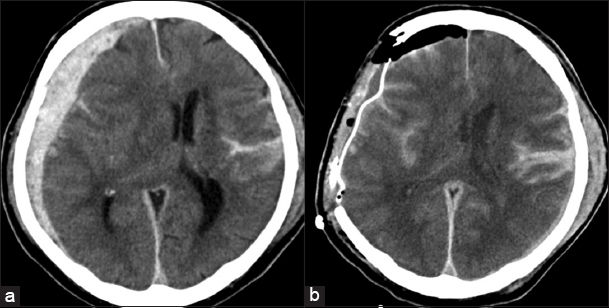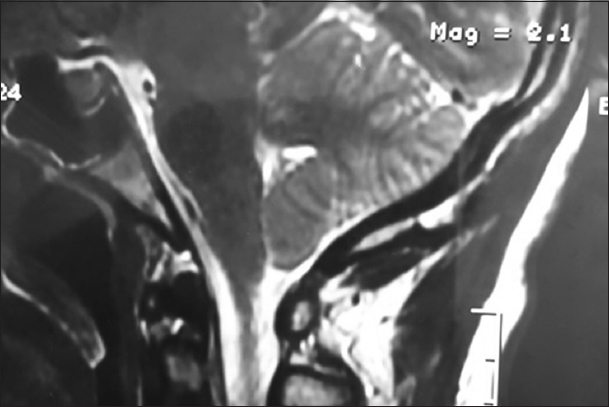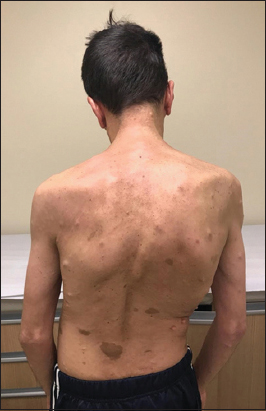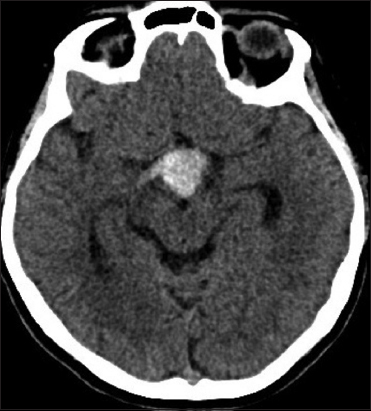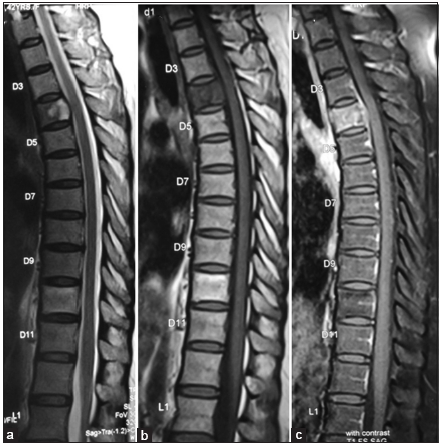Conditions associated with giant pituitary tumors at the time of surgery effecting outcome morbidity and mortality
Date of publication: 07-Jun-2019
Background:Surgical outcome prediction has assisted physicians in discussing surgical intervention or expectant management. While increasing pituitary tumor size would seem to be associated with increasing challenge of removal and associated complications, that relationship has not been borne in the literature.
Type I split cord malformation and tethered cord syndrome in an adult patient: A case report and literature review
Date of publication: 07-Jun-2019
Background: In a split cord malformation (SCM), the spinal cord is divided longitudinally into two distinct hemicords that later rejoin. This can result in a tethered cord syndrome (TCS). Rarely, TCS secondary to SCM presents in adulthood. Here, we present an adult female with Type I SCM resulting in TCS and a review of literature.
Postoperative day 1 versus postoperative day 5 morning cortisol for predicting an intact hypothalamic-pituitary axis: A cohort analysis
Date of publication: 07-Jun-2019
Background:A reliable standard for evaluating postoperative hypothalamic-pituitary-axis (HPA) function following transsphenoidal pituitary surgery (TSS) could reduce hospital stays and unnecessary prolonged steroid therapy. We retrospectively examined the predictive role of morning cortisol levels on long-term HPA function to develop an institutional protocol. Here, we report the results of this analysis, which is the first to report the predictive strength of multiple variables (i.e., timing of measurement and values of serum cortisol cutoffs) within the same cohort.
Gamma knife radiosurgery on the trigeminal ganglion for idiopathic trigeminal neuralgia: Results and review of the literature
Date of publication: 07-Jun-2019
Background: In the present study, we evaluate the results of gamma knife surgery (GKS) for the treatment of trigeminal neuralgia (TN) using the trigeminal ganglion (TG’) and the adjacent fibers of trigeminal nerve as a target.
Spinal cord ischemia/infarct after cauda equina syndrome from disc herniation – A case study and literature review
Date of publication: 10-May-2019
Background:Spinal cord infarction is rare and occurs in 12/100,000; it represents 0.3%–2% of central nervous system infarcts. Here, we present a patient who developed recurrent bilateral lower extremity paraplegia secondary to spinal cord infarction 1 day after a successful L4-5 microdiscectomy in a patient who originally presented with a cauda equina syndrome.
Acute paradoxical brain herniation after decompressive craniectomy for severe traumatic brain injury: A case report
Date of publication: 10-May-2019
Background:Sinking skin flap syndrome or paradoxical brain herniation is an uncommon neurosurgical complication, which usually occurs in the chronic phase after decompressive craniectomy. We report a unique case presenting with these complications immediately after decompressive craniectomy for severe traumatic brain injury.
Acquired Chiari I malformation due to lumboperitoneal shunt: A case report and review of literature
Date of publication: 10-May-2019
Background:The Type I malformations are supposed to be the result of mesodermal defects that create a congenitally small posterior fossa. However, Chiari malformation could be also “iatrogenic” and then called “acquired” Chiari I malformation. In this study, the authors report the clinical feature of a patient who developed a Chiari I malformation after lumboperitoneal shunt.
Giant dumbbell C2C3 neurofibroma invading prebulbar cistern: Case report and literature review
Date of publication: 10-May-2019
Background:Neurofibromatosis 1 (NF1) has a broad spectrum of clinical manifestations, most typically involving café-au-lait spots and skin neurofibromas. Only 2% of patients with NF1 have symptomatic spinal tumors.
Transnasal endoscopic removal of a retrochiasmatic cavernoma: A case report and review of literature
Date of publication: 10-May-2019
Background:Cavernomas arising in the region of the optic apparatus are extremely rare, accounting for <1% of all the central nervous system cavernomas. Most patients are affected by acute visual disturbances related to hemorrhagic events. A prompt resection of the lesion together with a decompression of the optic apparatus may lead to a functional improvement. Almost all patients reported in literature were treated by means of a craniotomy, whereas only few papers described the use of a transnasal approach.
Thoracic cryptococcal osteomyelitis mimicking tuberculosis: A case report
Date of publication: 10-May-2019
Background: Isolated cryptococcal osteomyelitis of the spine is extremely uncommon; there have been only seven cases identified in literature. The majority were originally misdiagnosed as tuberculosis. Here, we present a patient with cryptococcal osteomyelitis of the thoracic spine with associated fungal retinal deposits.


